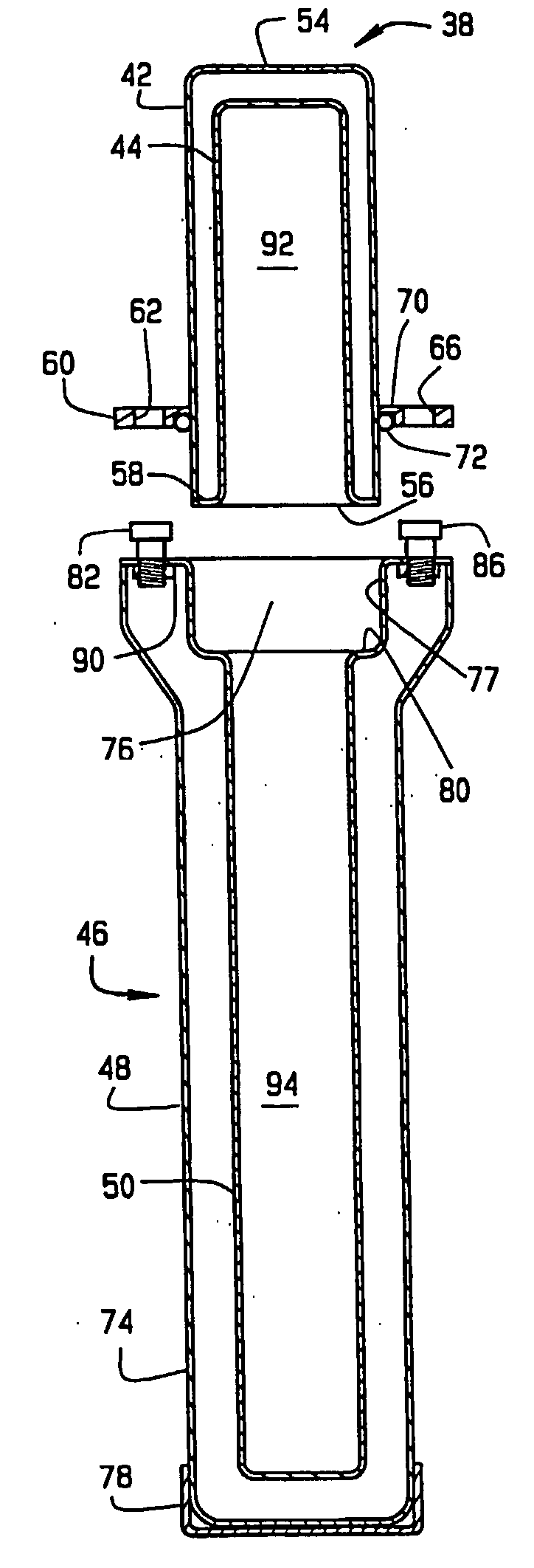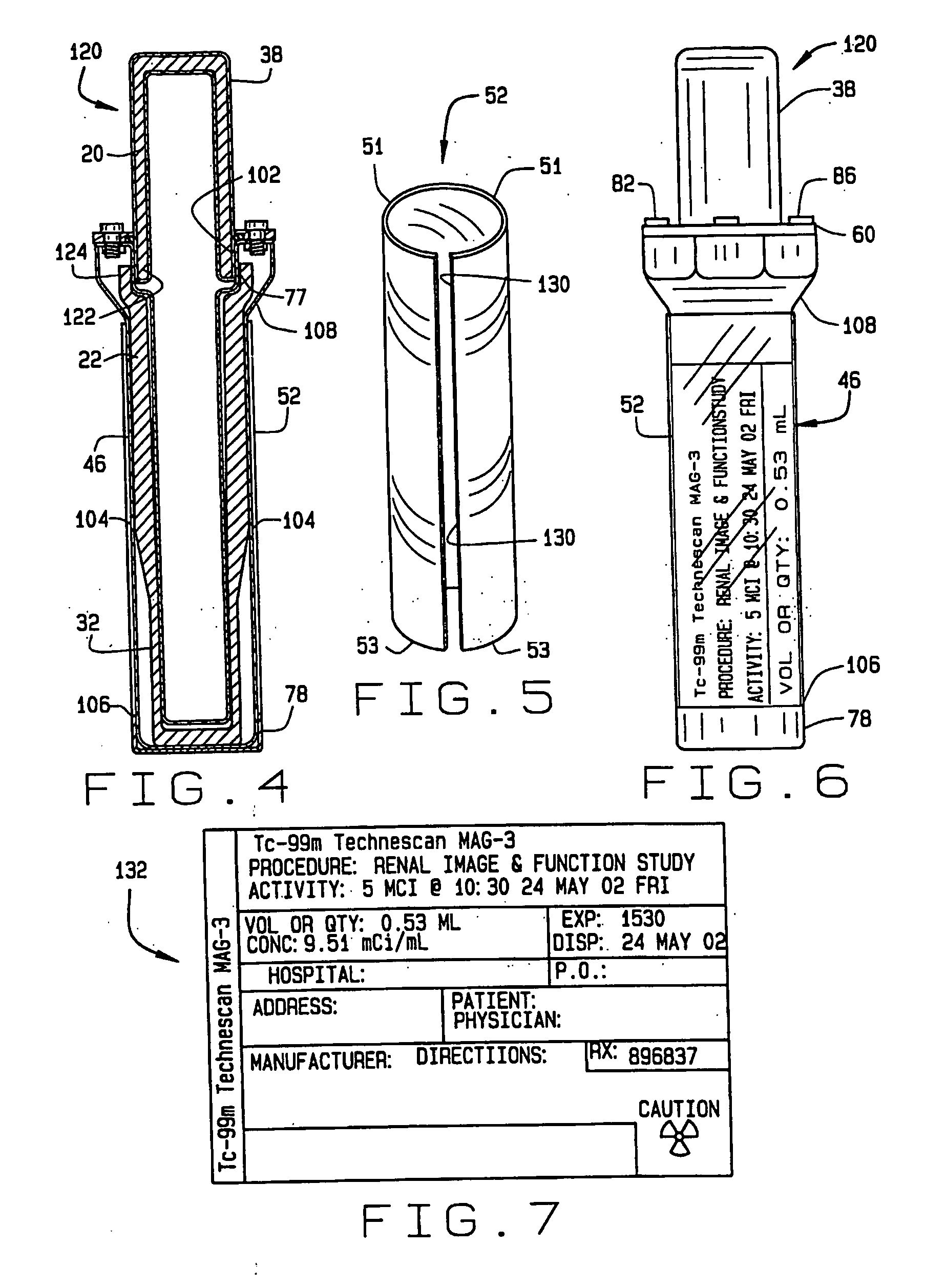Pharmaceutical pig and method of use
a technology of pigs and drugs, applied in the field of pharmaceutical pigs, can solve the problems of allowing radiation leakage, time-consuming and laborious, and much more expensive, and achieve the effect of reducing radiation leakage and reducing the overall weight of pigs
- Summary
- Abstract
- Description
- Claims
- Application Information
AI Technical Summary
Benefits of technology
Problems solved by technology
Method used
Image
Examples
first embodiment
[0086]FIG. 15 is a section view of the base 46 used in the three-part pharmaceutical pig 121 of FIG. 19. This first embodiment of the three-part pig includes a removable test tube-shaped inner liner 220 with a flared lip 232. The inner liner 220 has a closed end 226 and an open end 224. Unlike the prior art, there is never an inner liner in the cap 38.
[0087] The inner liner 220 with a flared lip 232 fits in the hollow center section 94 of the base 46. The flared lip 232 of the inner liner 220 is flush with the shelf 80, as shown in FIG. 15. The flared lip 232 may alternatively protrude slightly above the shelf 80.
[0088]FIG. 16 is a section view of the removable test tube-shaped inner liner 220 of FIG. 15 with a flared lip 232 at the open end 224. The inner liner 220 can be formed from glass, plastic or any other liquid impermeable material. The inner liner 220 is intended to be disposable, but it could be removed, washed and reused if desired.
second embodiment
[0089]FIG. 17 is a section view of the base 46 used in the three-part pharmaceutical pig. The inner liner 230 has a closed end 236 and the open end 234. This second embodiment of the three-part pig includes an inner liner 230 with straight sides 233 at the open end 234. The inner liner 230 fits in the hollow center section 94 of the base 46. The top 238 of the inner liner 230 is flush with the shelf 80, as shown in FIG. 17. The top 238 may alternatively protrude slightly above the shelf 80. Unlike the prior art, there is never an inner liner in the cap 38.
[0090]FIG. 18 is a section view of the inner liner 230 of FIG. 17 with straight sides 233 at the open end 234. The inner liner 230 can be formed from glass, plastic or any other liquid impermeable material. The inner liner 230 is intended to be disposable, but it could be removed, washed and reused if desired.
[0091]FIG. 19 is a section view of the base 46 used in the three-part pharmaceutical pig. This third embodiment of the thre...
PUM
 Login to View More
Login to View More Abstract
Description
Claims
Application Information
 Login to View More
Login to View More - R&D
- Intellectual Property
- Life Sciences
- Materials
- Tech Scout
- Unparalleled Data Quality
- Higher Quality Content
- 60% Fewer Hallucinations
Browse by: Latest US Patents, China's latest patents, Technical Efficacy Thesaurus, Application Domain, Technology Topic, Popular Technical Reports.
© 2025 PatSnap. All rights reserved.Legal|Privacy policy|Modern Slavery Act Transparency Statement|Sitemap|About US| Contact US: help@patsnap.com



